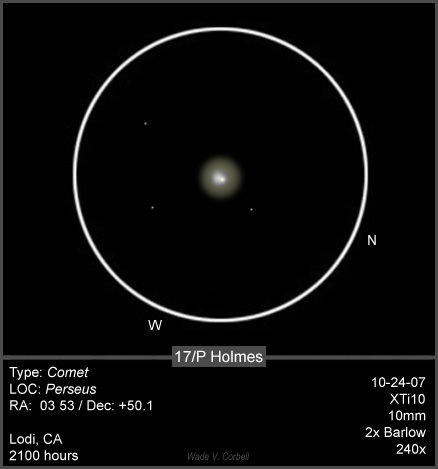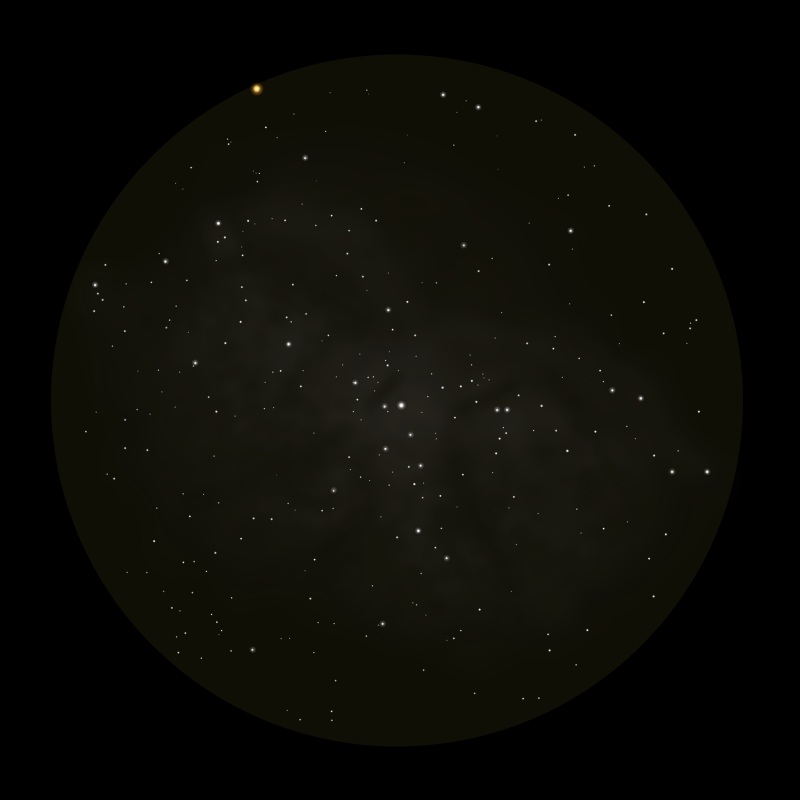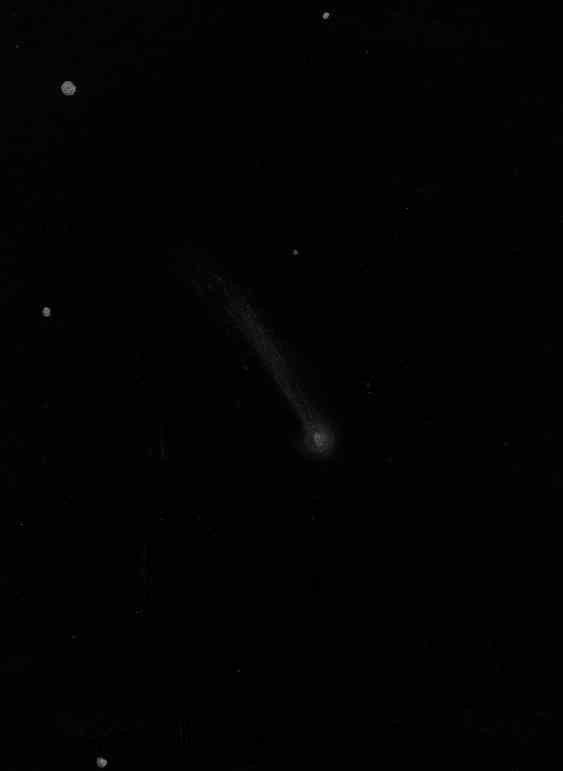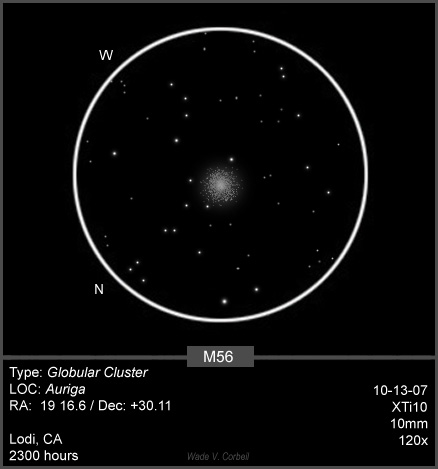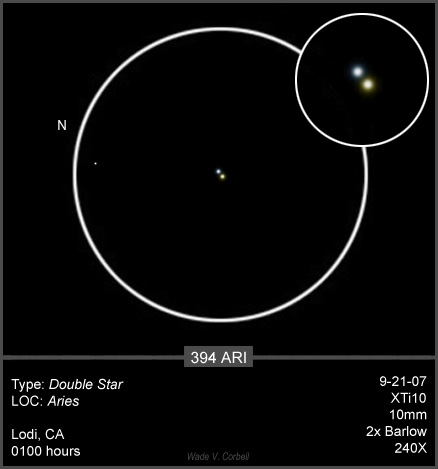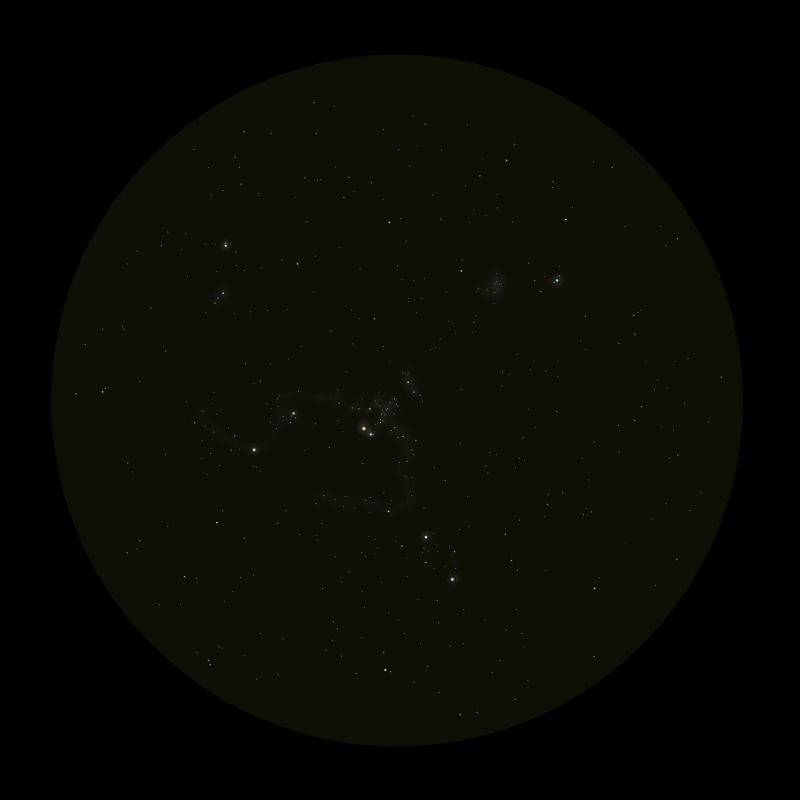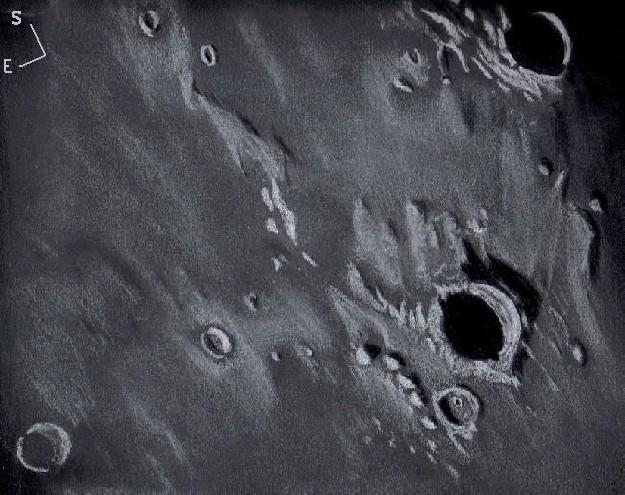
Before sunset when I set up to sketch, the wind was howling out of the southwest.
The atmospheric disturbance continued through the nighttime hours and the seeing
remained poor all night. However, the sky was transparent and I set up in a part
of my yard that was most sheltered from the strongest wind gusts.
I selected for sketching the craters on the floor of the lower Imbrian epoch Mare
Insularum. Basin ejecta debris could be seen strewn across much of the floor of
this sea.
From southwest at the terminator is sharp rimmed, upper Imbrian crater Lansberg
(39 km.) totally shadow filled. Further to the northeast about 120 km. is
Eratosthenian aged crater Reinhold (48 km.). With some difficulty I was able to
make out some wall terracing on the western inner slope. A somewhat narrow rampart
was visible around the outer crater rim. East of Reinhold a short distance are the
craters Reinhold B (26 km.) with its flat floor and on its flat floor little
Reinhold A (4 km.) difficult to see most of this observation. On further to the
east the youngest crater in this sketch is 12 km. Gambart A. Some of its ejecta
were brightly visible superimposed on the maria’s darker lava. At the extreme
eastern corner of the sketch is old crater Gambart (25 km.) about the same size as
Reinhold A and like its twin, flat floored, shallow and lacking a central peak
which is uncharacteristic for craters in this size range.
Sketching
For this sketch I used: black Strathmore 400 Artagain paper, 9”x12”, white and
black Conte’ pastel pencils and a blending stump. Brightness was slightly
decreased after scanning.
Telescope: 10 inch f/ 5.7 Dobsonian 6mm eyepiece 241x
Date: 10-21-2007 0:05-1:40 UT
Temperature: 16°C (62°F)
Clear, very windy (30 mph)
Transparency good
Seeing: Antoniadi IV
Co longitude: 27.3°
Lunation: 9.8 days
Illumination: 66.9 %
Frank McCabe

